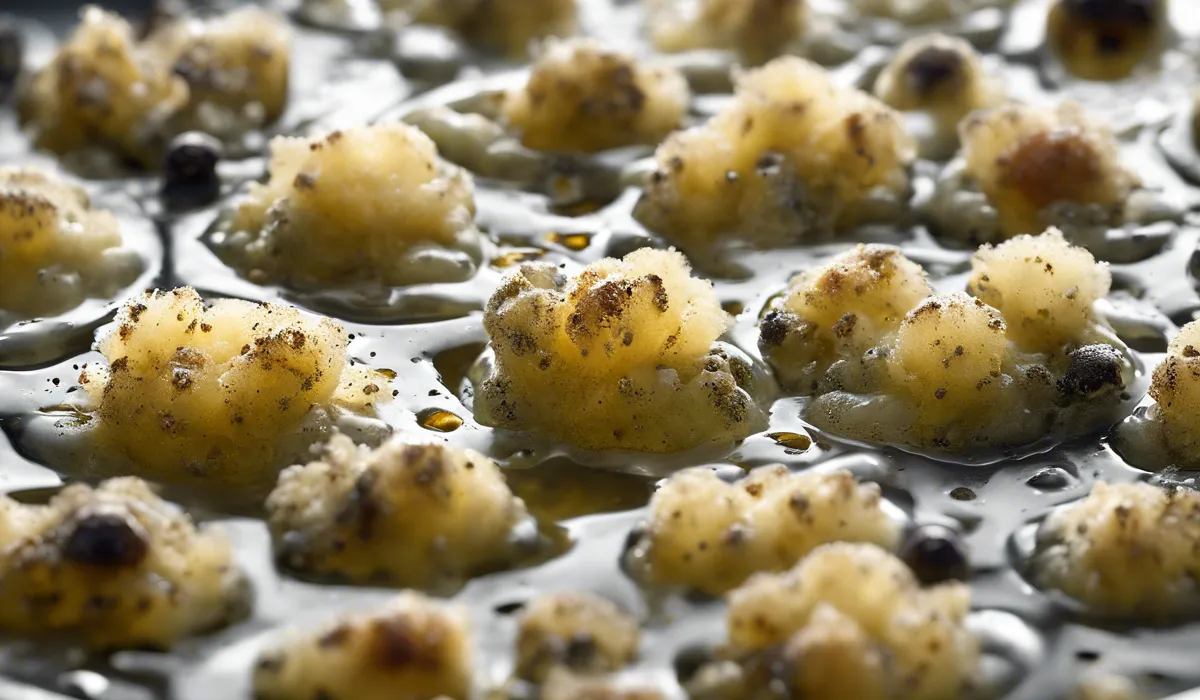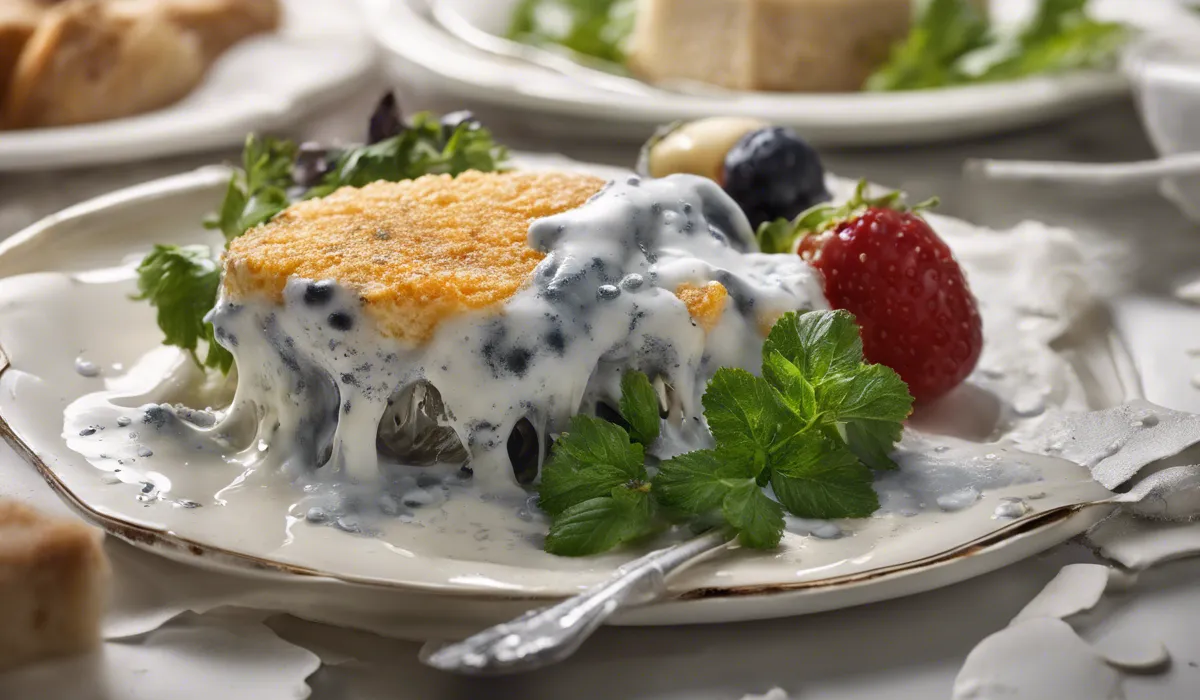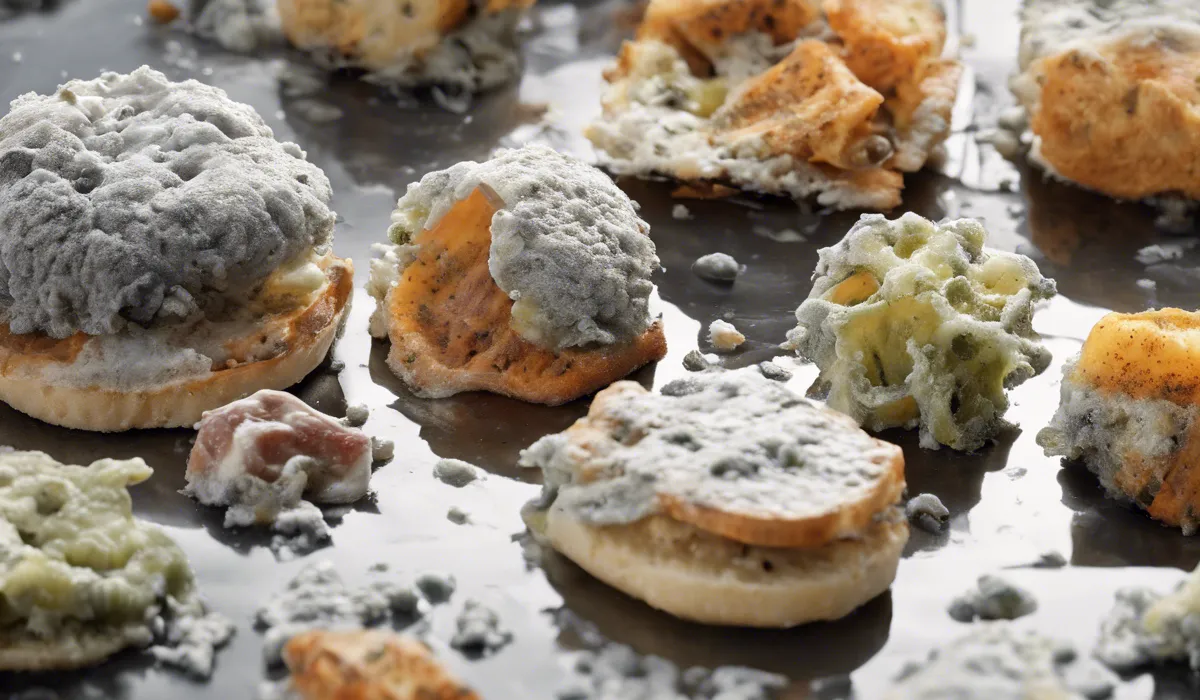No, you should not remove mold from food and eat it. Mold can have deep roots and produce toxins that aren’t removed by scraping the surface. Consuming moldy food poses health risks, so it’s best to discard it entirely to ensure safety.
Identifying Mold on Food

What Is Mold?
Mold is a type of fungus that grows in multicellular structures called hyphae. These tiny threads can spread rapidly, especially in warm and moist environments.
Mold is a natural part of the environment and plays a crucial role in breaking down organic matter. However, when it grows on food, it can become a problem for us.
Spotting Mold on Food
To identify mold on food, look for fuzzy or slimy spots. Mold can be various colors, including white, green, black, or even pink.
Sometimes, you might notice an off smell coming from the moldy food, which is a clear sign that the food is no longer good to eat.
Types of Mold on Food
Different types of mold can grow on food, such as Penicillium, Aspergillus, or Cladosporium.
Each type can appear differently and can affect the food in various ways, some being more harmful than others.
Health Risks of Moldy Food
Eating moldy food can lead to allergic reactions, respiratory issues, and in some cases, more severe health problems due to mycotoxins — toxic substances that some molds produce.
It is essential to take mold on food seriously and handle it with care.
Understanding Mold’s Reach
What you see on the surface is just the tip of the iceberg. Mold has a root system, called mycelium, that can penetrate deep into the food.
So, just removing the visible mold isn’t enough to make the food safe to eat. The contamination is often much more widespread than it appears.
Safe Practices for Handling Moldy Food

The ‘Hard and Soft’ Rule
The ‘hard and soft’ rule is simple. If mold appears on hard foods like carrots or hard cheeses, you might be able to cut the mold out.
However, for soft foods like bread or soft fruits, you should throw the entire item away because mold can spread quickly through these types of foods.
Guidelines for Specific Food Types
For cheese, you can cut off at least an inch around the moldy spot on hard cheeses. For fruits and vegetables, discard any soft ones with mold.
If bread has mold, it’s best to discard the entire loaf as the spores can spread through the air pockets.
Cleaning to Prevent Cross-Contamination
After handling moldy food, clean all surfaces, utensils, and your hands thoroughly. This helps prevent the spread of mold spores to other foods or areas of your kitchen.
Storing Food to Prevent Mold
To prevent mold growth, store food properly. Keep your refrigerator clean and at the right temperature. Use airtight containers for leftovers and consume them within a few days.
When to Discard Moldy Food?

The Dangers of Mycotoxins
Mycotoxins are poisonous substances produced by certain molds. They can be very harmful if ingested.
Foods with high moisture content can be a breeding ground for these molds and should be discarded if mold is found.
Signs of Deeper Contamination
If mold is accompanied by a foul odor or the food’s texture has changed, it may signal that the contamination has gone deep.
In such cases, it’s safest to throw away the food to avoid any health risks.
Risks of Salvaging Moldy Food
Attempting to save parts of moldy food isn’t worth the risk. The mold you see on the surface might be just a small part of the problem.
Consuming any part of it could lead to food poisoning or allergic reactions.
How to Discard Moldy Food Safely?
When throwing away moldy food, seal it in a bag to prevent the spread of spores. Clean your trash can regularly to avoid mold growth and attracting pests.
Consulting Health Professionals
If you have concerns about mold exposure or if you’ve accidentally ingested moldy food, seek advice from a healthcare provider. They can provide information about the potential risks and necessary steps to take.
FAQs About Removing Mold from Food
Can you safely cut off mold from cheese and eat the rest?
For hard cheeses, you can cut off at least 1 inch around and below the mold spot and eat the rest. However, for soft cheeses, you should discard the entire product if mold is present.
Is it safe to scrape mold off of bread and consume the unaffected part?
No, it’s not safe because mold can spread invisible roots through bread. Discard moldy bread entirely.
If you remove mold from jam, can you eat the rest of the jam?
No, mold can contaminate the whole jar of jam, even if you can’t see it. It’s safest to throw away the entire jar.
Can mold on fruits and vegetables be cleaned off, making them safe to eat?
For some hard vegetables and fruits, you can cut off the moldy part and eat the rest, but be sure to remove at least 1 inch around the mold. Soft fruits and vegetables should be discarded.
Is it safe to eat moldy nuts after removing the visible mold?
No, it’s not safe. Mold on nuts can produce aflatoxins, which are toxic and carcinogenic. Discard moldy nuts entirely.
Final Thoughts
It is unsafe to simply remove mold from food and consume the rest. Mold can extend beyond visible areas and release harmful toxins that are not eliminated by surface scraping.
To avoid health dangers, moldy food should be completely discarded to maintain food safety.
Useful Resources
- http://www.fsis.usda.gov/food-safety/safe-food-handling-and-preparation/food-safety-basics/molds-food-are-they-dangerous
- https://ask.usda.gov/s/article/If-food-has-mold-is-it-safe-to-eat
- http://www.fsis.usda.gov/food-safety/safe-food-handling-and-preparation/food-safety-basics/freezing-and-food-safety
